|
TennisOne Lessons Seven Habits You May Want to Adopt How the average tennis player can achieve better tennis David W. Smith, Senior Editor TennisOne Stephen Covey’s 1989 self-help masterpiece listed seven principles, that if established as “habits,” an individual would be well on his way to creating true interdependent effectiveness in everyday life. And while the seven principles Covey outlined have far reaching applications (many of which can be indirectly applied to those who play tennis), I believe there are seven distinct principles that tennis players can work on which, if turned into habits, will result in remarkable and highly effective play. Some of these habits are subtle elements which are often overlooked by the tennis teaching industry in its continuous quest for the perfect, most efficient stroke. That stroke, unfortunately, often seems to lie just outside the reach of the recreational community, no matter how much time is spent identifying stroke components of the pros and separating player idiosyncrasies from core foundation elements.
While I believe most players can indeed achieve stroke mastery, the reality is that most players who have established games and methodologies will be hard-pressed to make significant changes in their grips, footwork, or swing patterns. This renders the achievement of so-called high-performance stroke patterns problematic for all but the most disciplined and dedicated tennis students. These changes to existing stroke patterns are made even more difficult due to combative and highly competitive nature of the game. What I hope to achieve in this article is to help players recognize seven distinct areas of the game which can greatly contribute to their on-court success…even though these areas don’t necessarily employ significant stroke, footwork, or grip changes. Habit One: Pro-Active Footwork Unlike Covey’s interpretation of Pro-active (as being able to take responsibility for everything in one’s life), pro-active footwork refers to movement, not just to hit the ball, but to move into the very best position to hit the ball well in each and every opportunity. I list this habit first because it is one of the most glaring areas of deficiency among almost all intermediate players. (In other words, the bulk of the playing population!) And, it also contributes to many of the other bad habits which I’ll be discussing later. Most players only move fast enough and far enough to make contact with the ball on their strings. The result of this movement is that it enables a player to hit the ball over the net with a minimum of effort. So when a player at the baseline sees a ball coming to him high and deep he may only take a step or two at most, secure in the knowledge that he can usually get the ball back over the net. He may have to half-volley the ball at his feet but it will go over. However, if the same player took several quick steps backward, he would be in a far better position to stroke the ball aggressively.
Another example is a ball hit towards a player’s body. At the club level players will usually move just enough in either direction to get the racquet on the ball. However, they often fail to position themselves so that they can hit a more effective shot with good balance and weight transfer. This factor has nothing to do with strokes or grips; however, it has everything to do with taking those few extra small, adjusting steps to place yourself into the optimal position to strike the ball. A few years ago I was speaking at a USPTA convention and a fellow pro mentioned the difference in steps between pro, college, and recreational players of different NTRP ratings. The pros averaged 10 to 12 steps between each hit in any given rally. The typical 3.5 level player takes an average of 4 to 6 steps and the 3.0 level player took even less than this number. This revealing statistic demonstrates that the better the player, the more steps are taken for each shot in a rally. Habit Two: Holding the Finish I have several favorite key phrases that simplify and solidify certain hitting elements that I mention in my book TENNIS MASTERY, (and in my upcoming book, COACHING MASTERY). One of my favorite phrases is “Hit and Hold”…the simple idea of holding the finish or follow-through of any shot for a very brief but distinct moment.
Many players blur the distinction between the end of one shot and the start of another. We see players swinging their racquet, their feet, and their bodies in such a way that the end of the stroke literally has no end! Among the pros, you will often see a player hold the follow-through even while recovering for the next shot. Roger Federer is a classic example of this finishing hold. But, perhaps more importantly, when a player consciously holds the finish for a moment, she swings within a more balanced foundation. Holding the follow-through and even the footwork after a shot, (unless they are pressed into a shot that they must run full-on to get) seems to help players swing with more balance and control. I often say that this action acts like a “governor” on a car -- a device that prevents the vehicle from going as fast as the motor would allow so the driver doesn’t lose control. When a player swings and holds the finish, he rarely over-swings, and usually plays the shot within the realm of his current abilities. Obviously, there are some situations that a player must move fully and won’t be able to stop their inertia at the end of a swing. However, when a player can hold the follow-through he will likely see an increase in control. In addition, holding the finish is a great way to learn a new stroke. It defines the method and creates a feeling of a distinct finish to any new shot. Accuracy also improves when a player holds the finish. Because there is a distinct beginning and end to the stroke, players can evaluate the result of the stroke better and make mental and physical notes. Strokes that do not have this component are more difficult to replicate and build a dependable foundation upon. (Please see “Hit and Hold: A Powerful Phrase that Works!” in the Lesson Library.) Habit Three: Set the Racquet Early The idea here is to establish the desired face or angle well before the ball arrives. Too often, players either turn too much or take their racquets back too far (when players use eastern grips on their volleys, they almost always take their racquet back too far because of the orientation of the racquet to the forearm), which sets the angle of the racquet well away from the desired target. This forces players to swing the racquet before the ball arrives just to align the racquet angle to the desired trajectory. On volleys especially, this almost always makes players over-hit, even if they time the swing just right. In most cases players are forced to decelerate the stroke so they don’t over-hit the ball or else they will usually over power the volley. This becomes especially apparent when such players try to hit an angle volley or a finesse drop volley.
Most knowledgeable players understand the importance of the continental grip for the volley foundation. However, adult players who have been using eastern grips for the volley have a difficult time trying to change to the continental. While I advocate players learning the more advanced continental grip as early as possible, players who do use eastern grips can execute more effective volleys if they develop the habit of setting the racquet face early. It is very difficult to execute a sharp angle volley if the racquet is facing somewhere other than the desired target prior to contact. The reason is simple: If the racquet is facing a different angle, you will literally have to swing the racquet so that it makes contact with the desired angle you are trying to achieve. This usually results in players hitting the ball too hard. Or, if the player recognizes that he is going to swing too hard he will decelerate the swing, resulting in a volley much deeper than the desired angle. This is one of the reasons that those who use eastern grips can seldom hit sharp angle volleys. The eastern grip naturally sets the racquet at a right angle to the forearm and parallel with the net when the player turns sideways (If the player takes any backswing at all, the racquet will be even further from the desired angle.). But, even with this grip, players can learn to set the angle early, adjusting their arm and body position so that the desired angle is established well before the ball arrives. The player can then gain enough control to angle or deflect the ball without trying to decelerate the swing. This habit also can be incorporated in groundstrokes. Regardless of a player executing a loop swing or straight back, open or closed stances, a player will want to establish the racquet face early in the swing so as to create a stroke that does not require changes in the racquet face during any part of the swing. Many players will open or close the racquet face too much during a backswing only to find they have to adjust the racquet as it nears the contact point. This makes it very difficult to create a reliable swing. (See Jim McLennan’s Tip: Dropping the Drop) Habit Four: Maintain Balance On Every Shot
I played tennis as a youngster in Southern California and during the spring, it was not rare to have the dry, Santa Ana winds pick up during a match. It was one of those days that I got a bloody nose right before a match I had with the second best player in our league. I had beaten him in close matches before, but now I had to play him with a bloody nose! As a result, I had to move very consciously and without extraneous movements, like playing while balancing books on my head. Well, I seldom missed a shot and won the match easily 6-1. This experience, as I discovered later, is common with many players. Many players have had a similar experience -- they hit balls with ease, without rushing, and played their best when some sort of minor injury prevented them from doing things they usually did. Often a slight angle sprain, a tender arm or back can force a player to play with more care and intention. But the real discovery is that when players simply move with smaller steps and maintaining good posture, they can set up the stroke with better balance. Balance usually limits pain and, perhaps more importantly, fosters a more effective stroke with better contact and a smoother swing path. Obviously, the first two Habits I’ve already mentioned are part of this fourth Habit. Taking more steps and being able to hold the finish both contribute greatly to swinging with balance and control. Seldom do players over-hit when they are conscious of this control. A good tip is to imagine you do have books on your head when you are on the court. This can help you maintain better posture. (Please read Gary Adelman’s series on The Alexander Technique.) Habit Five: Keep the Plane the Same
This concept deals with keeping a congruent racquet face before, during, and after contact phase of the stroke. Using high speed video cameras, we can easily identify this element among pros and other high level players. This concept is one area that clearly distinguishes those players who are consistent, play well under pressure, and have excellent aim from those who struggle. Regardless of grip, swing pattern, or footwork, if a player keeps the hitting surface of the racquet steady throughout the stroke (i.e.: no wristy movements, rolling forearm topspins, or racquet dishing underspins), the player will have far more reliability and directional control. As you might suspect, these first five Habits are interrelated. Each one can build upon one or more of the others. Keeping the plane the same integrates balance, setting the racquet face early, and implementing a swing path that creates a steady racquet face. (Please see the newsletter, “Keep the Plane the Same.”) Habit Six: Breathe Out on Contact These days Pros hit the ball harder then ever so there is a need for these players to exhale faster. The reason for this is to remove air faster so that new air can be brought into the lungs faster, creating more oxygen to enter the blood stream and carry away more carbon dioxide. That is why we often hear pros grunting louder, it is to facilitate this exchange of air quicker. However, there is also another advantage to grunting. In Karate, the expiration of air is done as a catalyst to focus the mind on the contact point. (It is also a way to prevent having the air knocked out of the lungs when an opponent strikes them in the chest.) In tennis, a player can use this same concept to focus on the ball during contact. While I have not seen a study done identifying any real advantages to grunting as a means to improve focus, I have seen many players actually holding their breath during a long point. This creates “oxygen debt,” a concept of anaerobic exercise that prohibits long-term aerobic respiration during a rally and creates fatigue rather quickly within any sustained rally. (Please read “Breathing” by Happy Bhalla for more on this concept.) Habit Seven: Focus Where it Counts!
This deals with the mental side of tennis, the side which involves emotions, confidence, past and future concerns, results and ramifications, etc. Any player must understand that if the mind is focused on anything outside of the current shot, even remotely, the player will have less focus available for the shot at hand. The best players are those who can focus on the shot clearly without letting outside distractions interfere. There have been countless articles, books, and DVD’s that focus on this part of the game. Dr. Jim Leohr brought this to the forefront of tennis education about twenty years ago in his groundbreaking work, “The Sixteen Second Cure”…a video that studied and reported on the importance of "between point" player activity. More recently, Scott Ford has done a remarkable study on “Parallel Mode Processing” -- how the eye works in tracking and retaining focus on a moving tennis ball. Both Scott’s work and Leohr’s early work bring a player’s focus to the present. Players must move away from emotional concerns of what I call “result-driven” play, the concept of playing for a specific overall result. We have all seen players have a lead only to let it slip away; or, a situation where a player is playing well below his ability, usually against a player well below his own level. The bottom line is that a player will want to stay “on task” and only think about the shot at hand. How many times have we seen a player or ourselves ace someone only to double fault on the very next point? I think you get the picture! (Please read Scott Ford’s series on Parallel Mode Process.) Conclusion While high-performance tennis is full of complex and interrelated concepts, we can all take our current level of play and stroke production and apply these seven “habits” without going through a lot of frustrating change. Regardless of your current stroke tendencies, incorporate these seven habits and you will play better tennis. Your comments are welcome. Let us know what you think about Dave Smith's article by emailing us here at TennisOne .
|

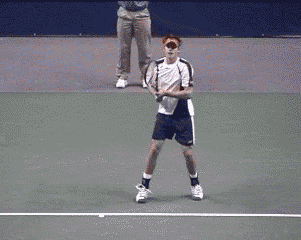
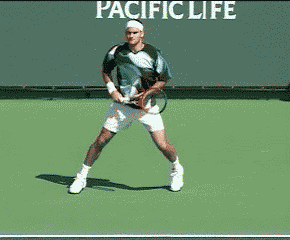
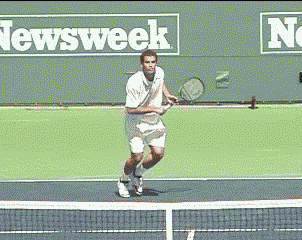
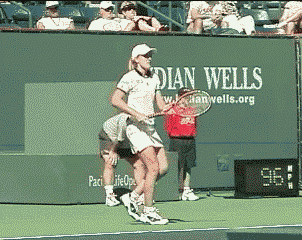
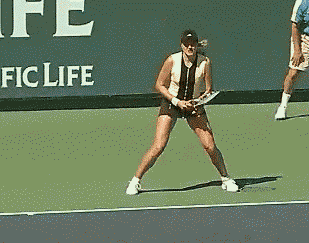
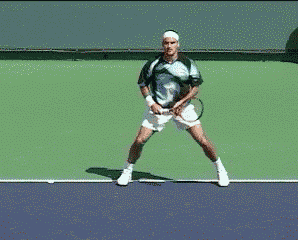
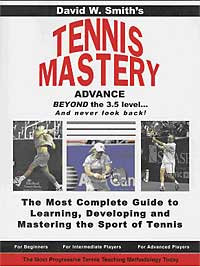
 Your comments are welcome. Let us know what you think about this article by
Your comments are welcome. Let us know what you think about this article by